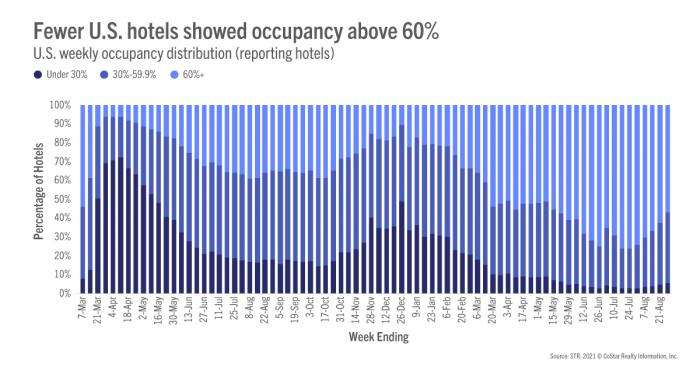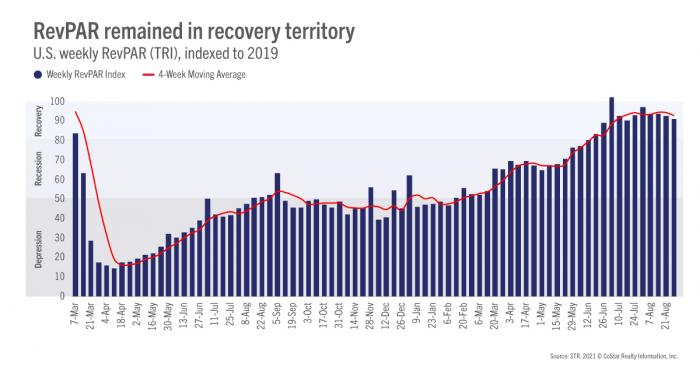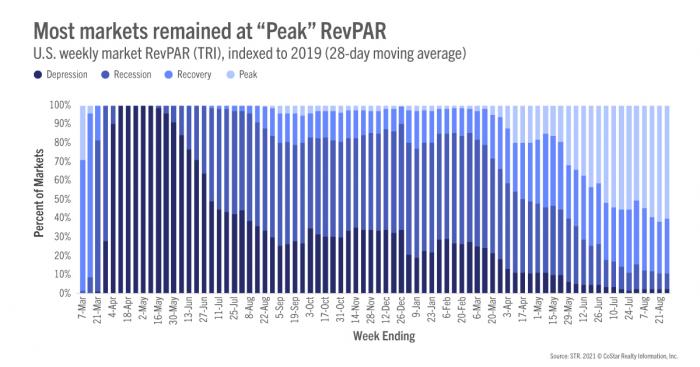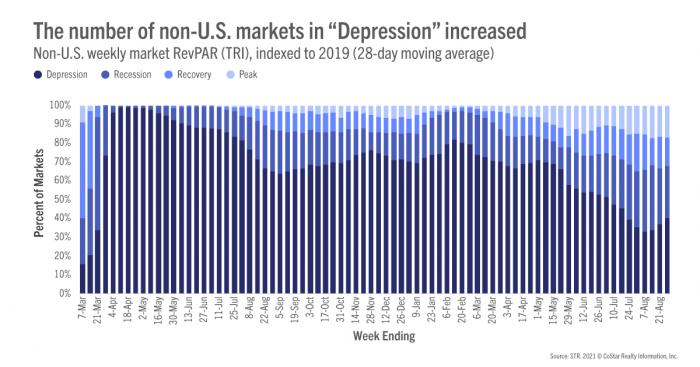Previous MRM versions: 14 August | 21 August
Week ending 28 August
Occupancy fell by more than two percentage points to 61.0% for the week ending 28 August 2021. This was the fifth consecutive week with lower occupancy and the fourth straight week with an occupancy decline of more than two percentage points. More than 77% of all STR-defined markets in the U.S. reported lower weekly occupancy, and U.S. occupancy is now at its lowest level since mid-May as just 57% of hotels saw weekly occupancy above 60%—the lowest percentage in 14 weeks. Weekday and weekend occupancy have each been trending down for the past five weeks. On a total-room-inventory basis (TRI), which accounts for temporarily closed hotels, weekly occupancy was 58.8%. In the U.S., there are still 49,000 rooms closed, 40% of which are in New York and Orlando.




